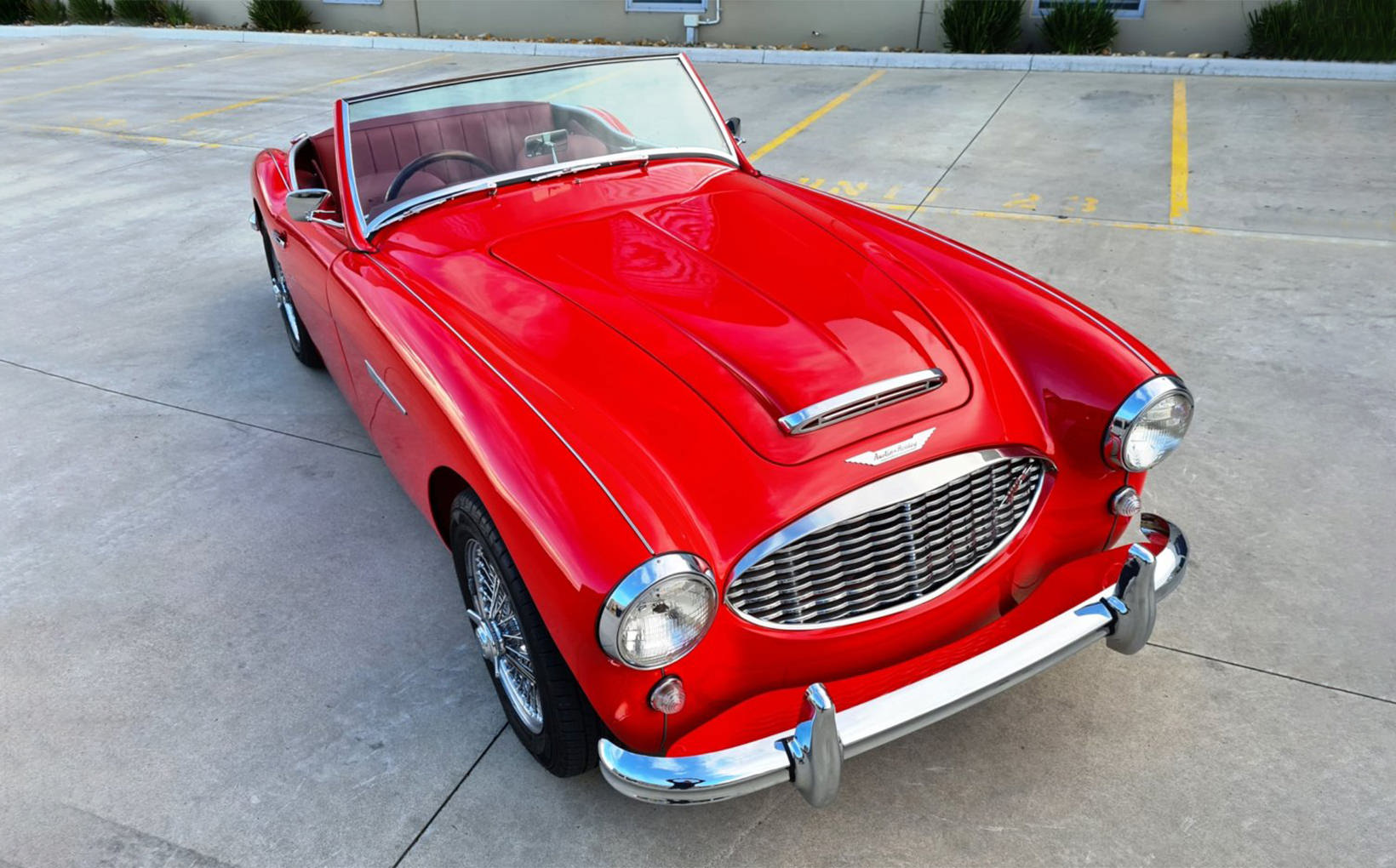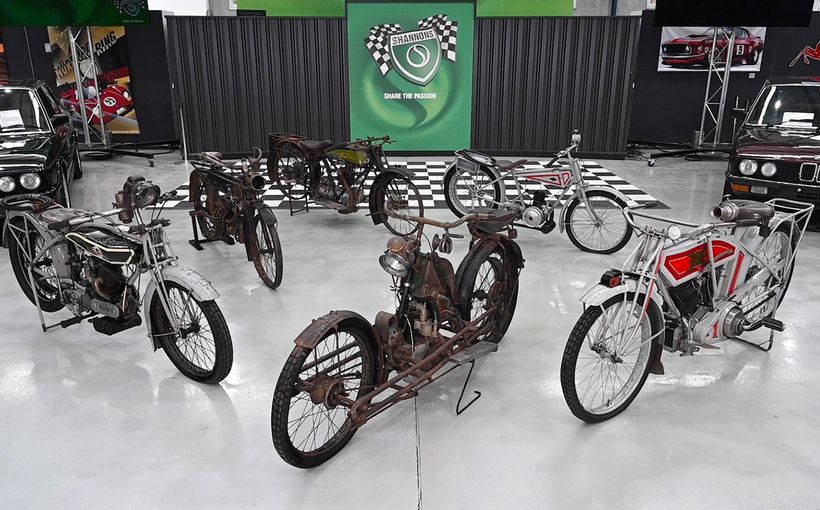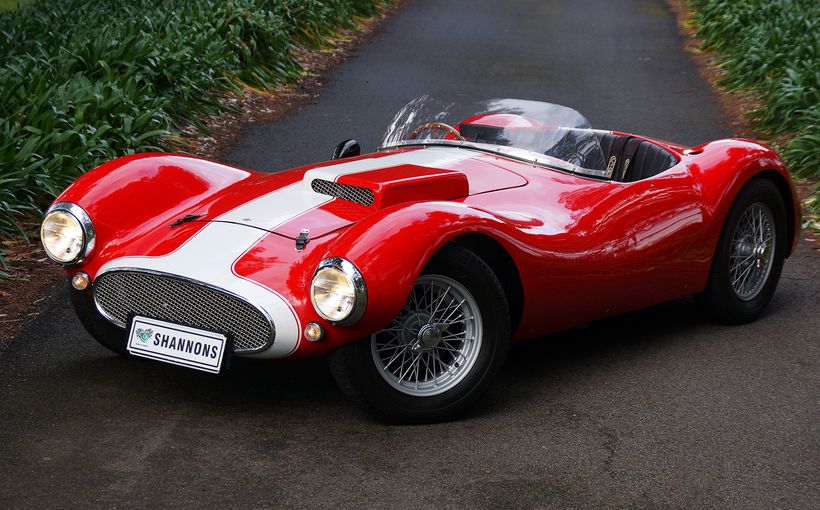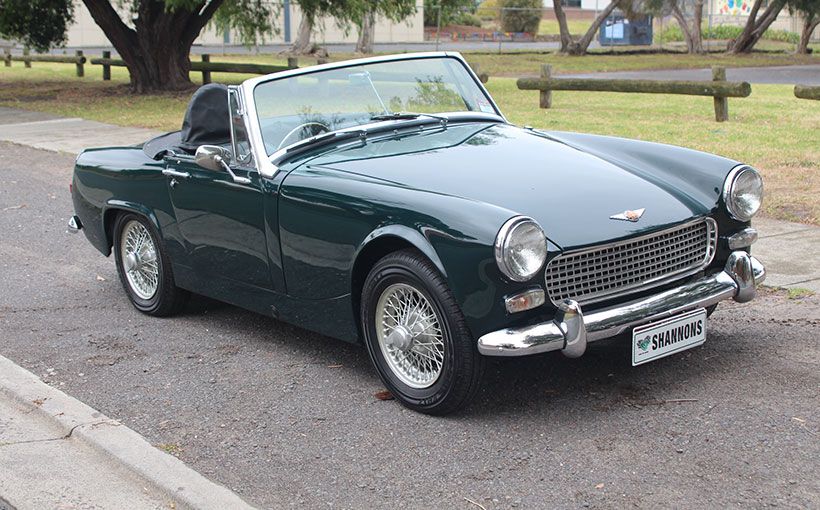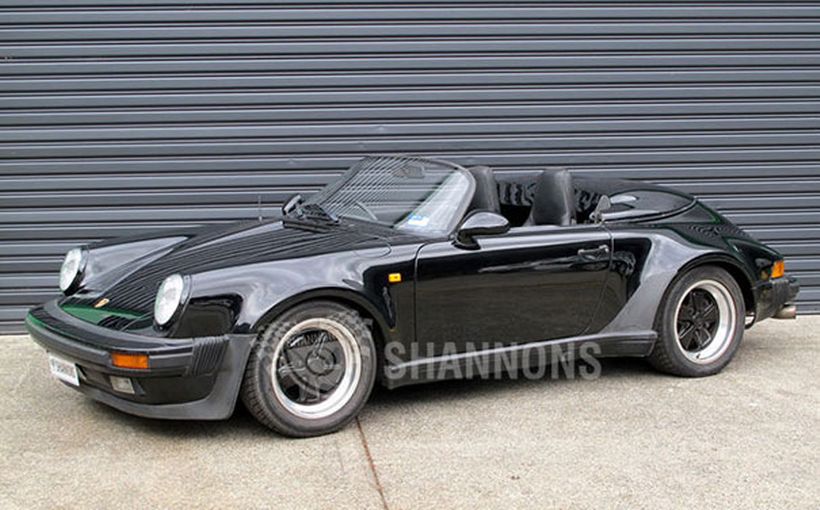Tony’s Austin-Healey 100/6: Best of British with a touch of Modern Motor

There’s something special about owning a classic car immortalised in a magazine article published decades ago. Shannons Club member Tony Capuano’s stunning Austin-Healey 100/6 did just that, when it was featured in the March 1959 issue of Modern Motor.
“I also own an MGA and an AC Cobra, so you could say I really like traditional open-top sports cars,” Tony admits. “I’ve always loved the big Healeys but when I was growing up their prices were always out of reach. Everyone wanted a Healey so it was something you aspired to own one day. When I came across this one it needed work, but the magazine story and its interesting ownership history drew me to it.”
Bryan Hanrahan’s Modern Motor road-test belatedly introduced Australian enthusiasts to a more powerful version of the 100/6. We say belatedly because even though UK production of this enhanced model commenced in 1957, it took more than a year before local automotive scribes were promoting it as the ‘latest’ version of the marque - publishing lead times were indeed longer in the 1950s!




Image: Modern Motor
The power upgrade for the 100/6 was timely, given that replacement of the original Austin-Healey 100’s four with BMC’s C-series 2.6-litre inline six did not initially provide the performance boost buyers had a right to expect and sales were slow.
The engine’s cast-in-head inlet gallery was the main impediment to increased output. This prompted BMC to respond with a new cylinder head design; its six inlet ports were fed by individual runners in a separate aluminium manifold, topped by twin 1.75-inch semi-downdraft SU carburettors. It also had larger valves and higher compression.
This became known as the six-port head although it’s often called the 12-port if you include the exhaust ports. Either way, along with the 100/6’s twin exhaust system, it unleashed an extra 15 horses to raise power output from 102bhp to 117bhp (87kW).

Image: Tony Capuano
Historical figures vary but Modern Motor claimed 0-60mph in 11.9 seconds and a higher top speed of 108mph. That was spirited 170km/h-plus performance in the 1950s for a robust and relatively heavy car (1100kg-plus) that was “a grand tourer rather than a sports car” according to Hanrahan.
“Taken all round, it’s a fast, safe car that offers Gran Turismo-style motoring for two and dickey-seat space for a couple of small-timers,” he concluded, while lamenting what he judged to be awkward pedal and gearstick placements.
Even so, the original Austin-Healey 100 (so named because of its 100mph top speed), 100/6 and definitive 3000 (3.0-litre six) models, which have become known as the ‘Big Healeys’ to distinguish them from the marque’s smaller Sprites, have a passionate global following. For many enthusiasts, they represent the quintessential British sports car, with a rich motor sport heritage in circuit racing and rallying.

Image: www.healeysix.net
Originally created in 1952 by Donald Healey using Austin A90 mechanicals, the ‘Healey Hundred’ with its rigid chassis-body structure, twin-wishbone front/leaf-spring live axle rear suspension and drum brakes was embraced by the British Motor Corporation. Its move to mass-production under a new Austin-Healey nameplate commenced in 1953 and ceased in 1967 when the 3000 was replaced by the six-cylinder MGC.
According to Tony’s records, his 100/6 (model code BN4) was built on August 13, 1957 at BMC’s Longbridge plant in Birmingham and shipped to a Melbourne dealer. Finished in white with black upholstery, this Australian-delivered example was first registered on November 18 that year with the Victorian registration GTK-411.
Its first owner carried the keys from 1957 to 1960 and it was during that time it was tested by Modern Motor. However, given that GTK-411 was manufactured prior to the new six-port entering production, its original engine was replaced locally with one of the latest units prior to the magazine review; an upgrade confirmed by the Austin-Healey Owners Club.

Image: Tony Capuano
In 1960 the car was sold to Peter Harris who owned it until 1966, when it was purchased by Bernie Bignell. Its third owner was keen to upgrade its performance and although he initially stuck with the original drums, we suspect Bignell installed the front disc brakes that were fitted when Tony bought the car.
Bignell’s hand-written notes documenting extensive mods to the six-port engine include a displacement increase to 3.1 litres, Ford Zephyr pistons, special inlet manifold with triple SUs, six-branch extractors and a shorter exhaust system with tailpipe exiting under the door.
Although Bignell did not quote power figures, he did note that the original centre-lock wire wheels had to be replaced with stronger 8.0-inch-wide steels on the rear because they kept snapping their spokes! He claimed a rapid 14.4-sec standing quarter – four seconds faster than the best Modern Motor achieved with the car in standard trim and as quick as a Phase Three GT-HO!




Image: Tony Capuano
Bignell obviously drove the-then 10-year-old car hard, which no doubt included motor sport activities like drag racing. So, by the time it was sold to its fourth owner in around 1970, it was tatty, tired and in need of restoration.
However, even though that was the buyer’s intention, the 100/6 instead sat gathering dust in Queensland for about 35 years before Tony discovered it for sale through online classifieds. In 2005, he finally realised his boyhood dream by becoming the 100/6’s fifth owner.

Image: Tony Capuano
Unlike its previous custodian, Tony immediately commenced a full back-to-bare-metal, nut-and-bolt restoration which was largely done in his home garage in Melbourne.
It consumed 10 years of his spare time (and his helpful brother-in-law’s) to achieve what is unquestionably a superb result, that was deservingly judged ‘Best of British’ winner in the 2021 Shannons Club Show & Shine competition.
“We stripped it and reassembled it ourselves,” Tony says. “The body and paintwork were professionally done, as was the reconditioning of the engine, gearbox (four-speed with electric overdrive) and rear axle. Cars from that era are simple compared to today, so they’re not difficult to pull apart and put back together.”

Image: Tony Capuano
Tony’s 100/6 may have originally been white with black upholstery, but by the time he took possession both were needing renewal: “I’ve always loved red as a car colour, so I decided to make a change.” He studied BMC colour charts before choosing an eye-catching and period-correct Austin hue called Colorado Red. BMC’s factory-prepped competition cars were also red, so there’s a nice historical connection there.
The interior trim was professionally changed to what Tony describes as burgundy in colour, with contrasting red carpet creating a classy combination. Although the seating has the appearance of fine leather, it’s actually vinyl which Tony says is ideal for upholstery that spends most of its roofless outdoor time exposed to the elements. “I went for vinyl because it’s harder-wearing and requires less maintenance than leather. For a car like this, vinyl is more practical.”

Image: Tony Capuano
Tony, who is a member of the Shannons Club-listed MG Car Club Geelong Inc, says his 100/6 is fun to drive with excellent all-round performance for its era. “It has plenty of power, it sits nice and low on the road and the handling is great. It’s pretty much like driving a new car because everything has been restored or renewed. The only thing I don’t like (as noted by Modern Motor) is that the gearstick is off-set, which feels like it’s too far away at times.
“It’s a finely detailed car and I really like the solid build quality. When you close the doors, the bonnet and the boot-lid, you can feel the solidness in them. I also get a lot of satisfaction and enjoyment from just looking at its beautiful lines. For me, this car is a work of art.” It is for us too, Tony.
View Tony's Shannons Club Garage and Connect with TonyCapuano

